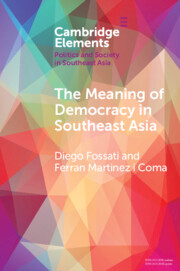Element contents
The Meaning of Democracy in Southeast Asia
Published online by Cambridge University Press: 16 January 2023
Summary
- Type
- Element
- Information
- Online ISBN: 9781108973434Publisher: Cambridge University PressPrint publication: 26 January 2023

